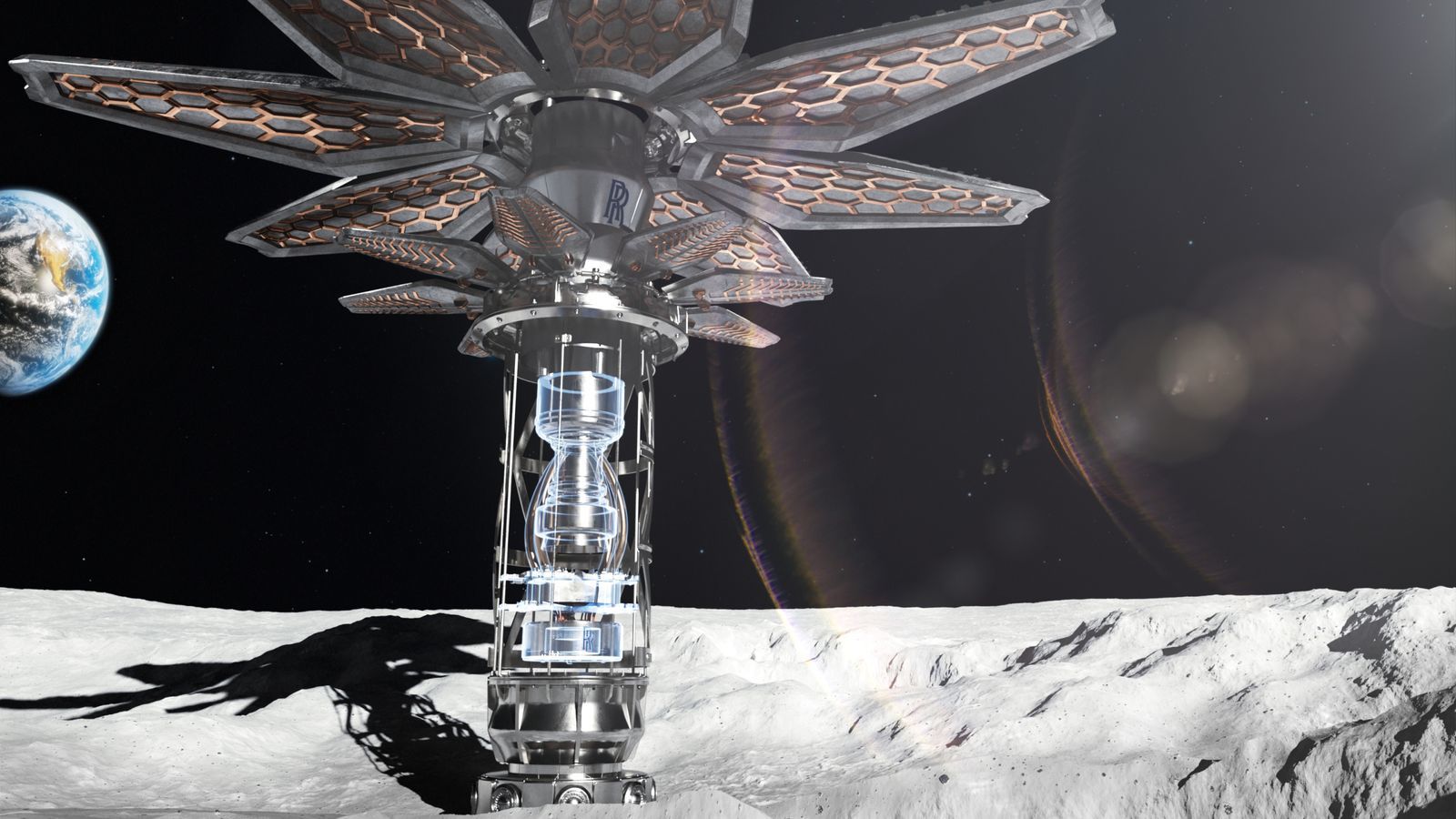It is hoped that the eventual lunar base will prove a suitable home for astronauts, where they could work on science experiments. Rolls-Royce is aiming to have its nuclear reactor ready by 2029.
Rolls-Royce has received funding to build a nuclear reactor for a base on the moon.
It might sound like the setup of a James Bond film, but is in fact part of a very real-world project that aims to see humans living and working on the lunar surface.
The UK Space Agency has given Rolls-Royce a fresh £2.9m to construct the reactor, following a £249,000 study last year that it also funded.
Engineers and scientists at the British firm are working on the Micro-Reactor programme, which will look into how nuclear power could one day support a full-time moon base.
It's hoped that it would provide enough energy for communications, life-support, and experiments.
Rolls-Royce is aiming to have a reactor ready by 2029. It's collaborating with universities including Oxford, Bangor, Sheffield, and Brighton to hit the target.
Science minister George Freeman said: "Space exploration is the ultimate laboratory for so many of the transformational technologies we need on Earth: from materials to robotics, nutrition, cleantech and much more."
He said the project was another sign that the UK is a "major force in frontier science".
 A concept image of the so-called Space Flower Moon Micro Reactor that could be on the lunar surface in 2029
A concept image of the so-called Space Flower Moon Micro Reactor that could be on the lunar surface in 2029
The government says Britain's space industry is worth £16bn.
Only California builds more satellites than the UK, and optimism remains that they will soon be launched from British soil, despite a failed attempt to do so in Newquay earlier this year.
Dr Paul Bate, chief executive of the UK Space Agency, said: "This innovative research by Rolls-Royce could lay the groundwork for powering a continuous human presence on the moon, while enhancing the wider UK space sector, creating jobs and generating further investment."
Work on the lunar base comes as humans prepare to return to the moon for the first time in more than 50 years.
NASA's Artemis mission got up and running in November and is aiming to put astronauts - including the first woman - back on the surface by the end of 2025.















